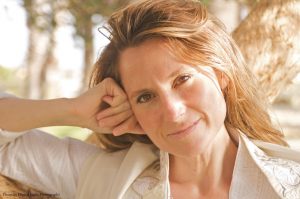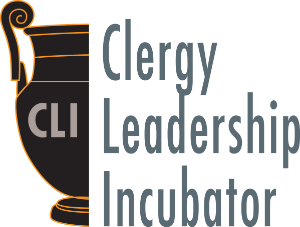How Radical Ritual Empowers a New Spiritual Community-Part 5
Rabbi Sid’s Editor’s Note: The DNA of CLI is transformational change, both of the American rabbinate and, more importantly, of the kinds of spiritual communities that can engage the passion and interests of 21st century Jews. Rabbi Lori is a graduate of CLI’s inaugural cohort. The Open Temple was incubated when Rabbi Lori was a CLI Fellow. Her creative re-imagining of all things Jewish should be an inspiration to others. This article, which we will publish in 5 installments in successive months, is the longest we’ve ever published. The article also sets the stage for CLI’s co-sponsorship of the Kol Tefillah Conference, scheduled to take place January 19-21, 2024 at Temple Beth Am in Los Angeles.
The final days of the yamim noraim are, oftentimes, the most neglected by congregations; instead of a  climax, we get a fizzle. In order for individuals to feel connected to the soul journey which Judaism offers us, it is essential to complete the observance and understand the importance of Hoshana Rabbah, Shemini Atzeret and Simchat Torah for the modern-day seeker. All three demand embodied rituals that make you sweat, like raindrops from our brows, as we observe our calendar’s movement into our rainy season.
climax, we get a fizzle. In order for individuals to feel connected to the soul journey which Judaism offers us, it is essential to complete the observance and understand the importance of Hoshana Rabbah, Shemini Atzeret and Simchat Torah for the modern-day seeker. All three demand embodied rituals that make you sweat, like raindrops from our brows, as we observe our calendar’s movement into our rainy season.
Hoshana Rabbah carries mystical importance. The physicality of the observance invites us into seven revolutions around the ritual space as we sing Hallel. The potential of this observance is great. We draw inspiration from the organization, Daybreaker, a wellness community & sober morning dance party inspiring happiness online and in cities around the world. So, we meet before dawn at a sunrise minyan and awaken our bodies to this special time in the Jewish holiday cycle. We also engage in the Jewish custom of whacking the willows – the final opportunity to expunge our transgressions, as the day itself is considered a mini-Yom Kippur.
As we transition out of Sukkot, we acknowledge our own connection to the tree of life. Many of our etrogim have lost their pitom (stem), and the aravah (willow leaf) has lost many of its leaves during the days of Sukkot. As one who has experienced self-realization workshops where I was handed a bat and a pillow and told to “beat out the negative love patterns of my family system,” in this final ritual on Hoshana Rabbah, I invite our members to join me in a fully embodied workout during which we reduce the elements of the lulav to a mere stem. If we held to our ancestral consciousness through Yizkor and wrestled with our history of family growth and trauma, then the experience of a 7-circle dance with the crescendo of the beating of a willow branch (so vividly representing sorrow, in their “weeping willow” description), invites us into an act of generational catharsis. The ritual literally, allows us to re-set our neuro-pathways for the new year.
Following our renewal, we must turn outward and face the world. Just as Adam and Eve left Eden and went their solitary way, so, too, must we leave the Eden of the High Holidays. As we look through the window, we know that we have no choice but to enter back into a world of uncertainty. Our liturgy underscores this truism, and we move from the prayer of tal (like a baby’s breath of dew), into a prayer for wind and rain. Shemini Atzeret, traditionally understood as “a solemn stop,” provides a sobering understanding of the enormity and awe for what needs to happen to keep the world, and our lives, in balance.
Both rituals find us in a dance studio, moving through a 5rhythms dance. A dynamic movement practice, 5rhythms dance views movement through “flowing, staccato, chaos, lyrical and stillness,” a framework that companions the experience of our High Holiday Ritual Lab. We invite journaling, embodied reflections of the past month, as well as moments of stillness and silence for integration. We have been through a lot these past few weeks. By completing the ritual festival of Sukkot with a shivasana yoga pose on the floor, participants are led through a guided imagery to integrate the experiences of the past month into their body as we commit to the new practices we have discovered during the past month. We are ready to begin again.
Commencement: Dancing into Eternity
The High Holidays don’t end with Simchat Torah; rather, Simchat Torah is the commencement celebration of the New Year. It’s like graduating from the yamim nora’im, having done our work, completed our assignments and been transformed through our learnings. At Open Temple, we end where we began– gathering at the beach at night. With Torah in our arms, we unroll the entire Torah before the Pacific Ocean, and receive our annual oracle. Every person present is holding a part of the unrolled Torah scroll and they are standing at different points in the Torah narrative. I walk around the circle, defined by participants holding a piece of parchment and, as I approach each person, I read a short portion from the section the participant is holding and I interpret it as a kind of oracle or teaching for us to take into the year ahead. Our Silent Disco headphones play a playlist both from the month we have observed together as well as some new mixes to inspire and elevate. After reading the last word of the Torah, yisrael, and then the first word of the Torah, beresheit, we re-enact the midrash that teaches that the last letter and the first letter of the Torah spell lev, or heart. Our community witnesses the rolling of the Torah back to the beginning, directing our hearts to the new year ahead.
We dance up the pier to “Dancing in the Street,” along with a modern mix created by DJ’s in our community, dancing freely for all to see – the fishermen and women catching the autumn migration of Pacific halibut, those who choose to live on the beach, and the bleary-eyed parent walking a stroller at night. Our dance is large; our bodies expansive, we feel free. We are celebrating that we are alive, as our observance over the past few months have deepened our life’s experience.
“Ana Adonai Hoshia Na; Ana Adonai Hatzlicha Na”, “Please God, save us” we call out from Psalm 118, the powerful verse from the Hallel prayer recited on Jewish festivals. We are about to leave the holy womb of our observance, the Israel of the imagination, and re-enter the chaos and exile of life. “Oh, deliver us; Oh, let us prosper,” we cry, also a verse from Hallel. Our prayer is to gird ourselves with strength and stamina to sustain these new promises, ideas and commitments. Passing the Torah from one participant to another, we cradle it in our arms, symbolizing so much – those who came before us; the mysteries of the universe; a Tree of Life; and the way we cradle a newborn child.
This is the way The Open Temple leads its community through the Jewish annual ritual of renewal and re-birth. Each year, our High Holiday Ritual Lab offers our co-creators an opportunity to come to life. Each year is dedicated to a new aesthetic so our innovations are unique to each theme.
What Open Temple does is not for everyone. Certainly, we have those who come to view our offerings as spectators; word has spread about our unique approach to religion and spirituality so we get a lot of guests who are more than welcome to drop in. But our growing community of regulars know what they are coming for. People are transformed. People openly weep. We receive written testimonials stating some version of: “I have never connected so deeply with High Holidays.” And my favorite: “why don’t more people know about this?”
My response is to just keep doing what I am doing. It is a small offering, a precious one, and I am here to teach it, one tender soul at a time.
___________
Rabbi Lori Shapiro is the founding rabbi of The Open Temple in Venice, CA. She developed the model as a Fellow in Cohort 1 of the Clergy Leadership Incubator (CLI) and then continued working on it when participating in the Open Dor Project. She and her husband, Dr. Joel Shapiro, live in the Venice canals with their two daughters and labradoodle.

